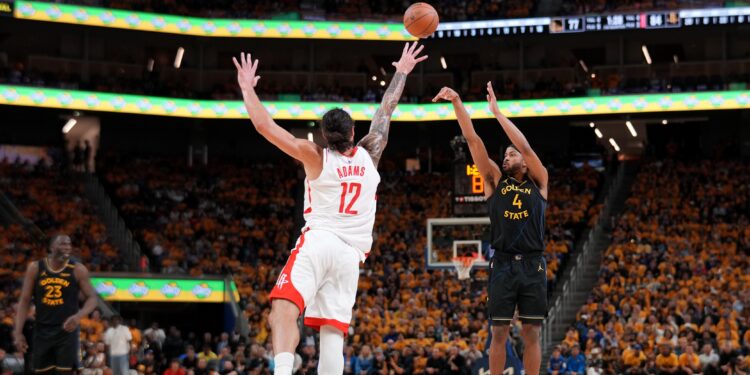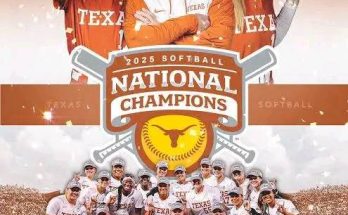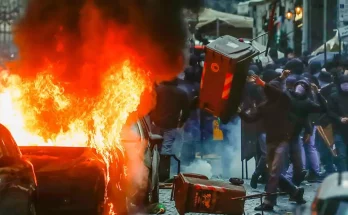The Golden State Warriors are at a crossroads. After a decade of dominance built on the brilliance of Stephen Curry, Klay Thompson, and Draymond Green, the franchise is grappling with the realities of an aging core, a ballooning payroll, and the pressure to remain contenders in an increasingly competitive Western Conference. Amid these swirling dynamics, a significant trade proposal is reportedly gaining traction behind closed doors—one that would involve moving promising young talents Moses Moody and Jonathan Kuminga in exchange for a 7-foot game-changing big man and a crucial \$37 million in financial relief.
To understand the weight of such a deal, it’s important to consider what Moody and Kuminga represent. Both were selected in the lottery during the Warriors’ brief rebuilding window. Kuminga, the seventh overall pick in the 2021 NBA Draft, has showcased elite athleticism, improved scoring instincts, and the kind of two-way upside that tantalizes general managers around the league. Still just 22 years old, Kuminga has improved each season, flashing moments of star potential with explosive drives to the rim, highlight-reel dunks, and defensive versatility that can’t be taught.
Moody, selected 14th in that same draft, has developed more quietly but consistently. His poise, perimeter defense, and reliable three-point shot offer the kind of glue-guy qualities championship rosters covet. He’s not flashy, but he’s effective. His playoff performances—marked by clutch minutes and smart decision-making—suggest a player who could have a long, productive career in the league. Together, Kuminga and Moody form the youthful heartbeat of a Warriors roster that’s increasingly defined by the graying faces of yesteryear.
But therein lies the dilemma. For all their potential, neither Moody nor Kuminga has yet blossomed into the kind of superstar that can carry the torch from Curry. And with the clock ticking on the tail end of the Splash Brothers era, Golden State must weigh whether waiting for these prospects to develop is a luxury it can afford. That’s why the front office is reportedly exploring a bold move—trading both for an established 7-footer who could instantly elevate the Warriors’ interior presence while shedding a burdensome \$37 million in salary and luxury tax penalties.
The target of such a trade remains speculative, but the Warriors’ needs are clear. They have lacked a true rim-protecting, floor-spacing center since the days of Andrew Bogut and JaVale McGee, and Kevon Looney, while a fan favorite and locker room staple, has physical limitations that have become more apparent as the league shifts toward dynamic bigs who can stretch the floor and anchor defenses. Draymond Green’s undersized frame and mounting suspension issues only exacerbate Golden State’s need for frontcourt reinforcement.
The Warriors’ cap situation is equally pressing. Joe Lacob’s ownership group has shown a willingness to spend like few others, but the combination of repeater tax penalties and new collective bargaining agreement restrictions has made every dollar more costly. Offloading \$37 million in salary relief would give the front office much-needed breathing room and flexibility to retool around Curry, who at 37 is still performing at an elite level but cannot carry the franchise indefinitely.
Kuminga’s rising value on the trade market plays into this equation. Multiple executives across the league have reportedly inquired about his availability, intrigued by his upside and rapid development. Moody’s inclusion sweetens the pot—an indication that the Warriors are serious about extracting maximum value while they still can. In a league where the balance of power can shift overnight, this is the kind of win-now gamble that could either revitalize Golden State’s title hopes or haunt the franchise for years.
Critics of the potential trade argue that moving two high-upside youngsters for a big man—especially in an era increasingly dominated by wings and perimeter play—could prove shortsighted. After all, Kuminga and Moody are still on affordable contracts, and their growth trajectory suggests they could become major contributors by the time the next generation of Warriors matures. Trading them now risks selling low on the future for a fleeting present.
But that assumes Golden State is building for the future at all. Everything about the franchise’s recent decisions—from re-signing Draymond Green to retaining veteran-heavy lineups—suggests the front office is doubling down on its commitment to Curry. If that’s the case, then upgrading the roster immediately, rather than two seasons from now, is paramount. And if that upgrade comes in the form of a 7-foot difference-maker who can alter shots, set hard screens, and space the floor? Then perhaps the price, as painful as it may seem, is one the Warriors are willing to pay.
Much depends on the identity of the big man in question. Names like Myles Turner, Lauri Markkanen, or even a returning Kristaps Porziņģis have been floated by NBA insiders, though nothing has been confirmed. Each would bring a unique set of skills—Turner as a shot-blocker with three-point range, Markkanen as a versatile scorer and rebounder, and Porziņģis as a high-risk, high-reward unicorn whose health is always a question mark. Whoever the mystery man may be, he’ll need to mesh with a locker room built on trust, hierarchy, and championship DNA.
For Moody and Kuminga, a trade would be bittersweet. On one hand, it would be an opportunity for more consistent minutes and a larger role—something that’s been sporadic under Steve Kerr’s veteran-heavy rotations. On the other, it means leaving behind the culture, structure, and mentorship that has helped shape their early careers. Young players often thrive in stability, and few franchises offer the blend of excellence and support quite like the Warriors. But opportunity elsewhere could accelerate their rise in a way that Golden State’s timeline simply cannot accommodate.
From a fan perspective, the idea of parting with two promising homegrown talents stings. There’s an emotional attachment to players drafted and developed by the team, particularly ones who have shown flashes of brilliance. But championships are not won by sentiment—they’re won by calculated risk. And if the Warriors truly believe they can chase one more title with Curry at the helm, this might be the bold stroke required.
It’s also a reflection of the broader NBA landscape. As teams like the Denver Nuggets, Minnesota Timberwolves, and Oklahoma City Thunder rise in the West with deep, athletic rosters and versatile bigs, the Warriors risk falling behind unless they adapt. No longer can Golden State rely solely on its small-ball identity and perimeter firepower. The league is evolving, and the Warriors must evolve with it or be left behind.
A potential trade could also serve as a statement of intent to Curry himself—that the organization is still committed to maximizing his remaining prime years. After all he’s given the franchise, from MVP seasons to championships and global brand elevation, it’s only fair that the front office puts its chips on the table to ensure he doesn’t waste his twilight years on a middling, over-taxed roster.
Of course, trades of this magnitude carry inherent risk. If the incoming big fails to deliver or is beset by injuries, the Warriors could find themselves stripped of both young assets and financial flexibility. But sitting still is a risk, too—perhaps an even greater one. Inaction could lead to another first-round playoff exit or worse, wasting the last great seasons of a generational talent while holding tightly to players who may not reach their full potential in time.
In the end, the decision will come down to philosophy. Do the Warriors prioritize the next two years or the next ten? Do they bank on potential or proven production? Can they straddle the line between honoring the past and embracing the future?
The clock is ticking in Golden State. And as the front office weighs the futures of Moses Moody and Jonathan Kuminga, it must also confront a simple truth—great dynasties are built on risk, and sometimes, to stay great, you must be willing to gamble it all once more.



